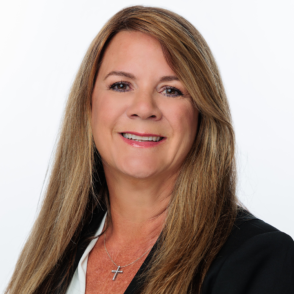Mold contamination, storage tank leaks and other environmental hazards can cost hundreds of thousands of dollars to resolve, yet approximately 90 percent of all environmental losses are not covered by insurance. To learn more about mitigating environmental risks, we spoke with Gina Jones, Vice President, Director, Environmental Programs, Burns & Wilcox.
What businesses are at risk for environmental losses?
G.J.: Every business carries environmental risks. The reason 90 percent of environmental losses are uninsured is that business leaders do not realize or believe they have environmental exposures and need Environmental Insurance. That is one of the biggest risks that our clients face, and it results in about $1 billion in uninsured losses every year.
Even businesses that seem the least likely to carry environmental exposures are at risk, and Commercial General Liability (CGL) Insurance policies have an absolute pollution exclusion. Without Environmental Insurance coverage, claims for costs related to property damage, bodily injury, cleanup or regulatory penalties would be denied and there would be no legal defense provided whatsoever. Those costs could easily put a company out of business, especially if it is a small company.
What types of Environmental Insurance policies are available and what do they cover?
G.J.: A Pollution Legal Liability Insurance policy provides coverage for a fixed site, like an owned or permanently-leased location. It generally covers costs related to bodily injury, property damage and cleanup for a pollution release on your site or pollution that migrates onto or off your site for which you are the responsible party. There is also a Contractor’s Pollution Liability (CPL) Insurance policy, which covers costs stemming from third-party liability. If a plumber were to cause or fail to repair a slow drip from a pipe or faucet and that dripping water leads to mold growth, that mold is a pollution condition. Provided there were no exclusions for mold, the CPL Insurance policy would cover any costs for cleanup, property damage or bodily injury. There is also Storage Tank Liability Insurance for underground and above-ground storage tanks, as well as Transportation Pollution Liability Insurance and Products Pollution Liability Insurance.
Can you offer any examples to illustrate this type of risk?
G.J.: One client’s business was cleaning restaurant grease traps. While the client’s vehicle was on the road, the back of the vehicle opened up and canisters of grease fell out. It was cleaned up immediately, before it was able to enter the sewer system, which was good. However, a woman walking down the road slipped in the spilled grease and sustained substantial injuries from the fall. The client’s claim for costs of bodily injury due to the pollution release were covered by their Transportation Pollution Liability Insurance policy.
Another example is a claim that stemmed from a clogged drain in an office building. When a building staff member used a chemical to unclog the drain, noxious fumes were released throughout the building. That building and buildings for several surrounding blocks had to be evacuated when people began to fall ill as a result of the fumes. The building’s Pollution Legal Liability Insurance policy covered all related losses, illustrating how our policies go so far beyond the cleanup of a property.
What else is important to know about Environmental Insurance?
G.J.: Any substance outside of its natural environment or in excess amounts can be a pollutant. There is a widespread misconception that substances must be inherently hazardous in order to be considered a pollutant. A tanker truck carrying milk can overturn, spill milk into a nearby river and disrupt an entire ecosystem—in that scenario and others like it, milk is a pollutant.
An additional point to keep in mind is that absence of loss does not mean absence of risk. Situations involving environmental liabilities may not occur frequently, but when they do occur, they are severe. Pollution related cases can be the most expensive to resolve because of all the expert involvement required.
What are the biggest opportunities for brokers in Environmental Insurance?
G.J.: Every client has an environmental exposure, so every retail broker should talk to every one of their clients about their exposures and make those clients aware that those exposures are not covered by their CGL Insurance policy. Environmental Insurance provides an excellent cross-sell opportunity for brokers and a great opportunity to showcase their value as advisors to their clients.
What features of Environmental Insurance are specific to Burns & Wilcox?
G.J.: We have access to every Environmental Insurance market. We also have an exclusive program with Lloyd’s of London, which is a valuable benefit. Because of our general expertise and the many professionals on my team who are experts in the environmental industry, we know the carriers and which one best meets each client’s needs. We are uniquely positioned to provide each client with the best combination of product, coverage and carrier.
Environmental Insurance
WHY YOUR CLIENTS MIGHT NEED IT: In recent fiscal years penalties collected by the EPA for environmental damages have been considerable—just over $1.5 billion in 2017, nearly $70 million in 2018 and $360 million in 2019. These totals do not include fines levied by state or local entities or hard costs of site remediation. The combined cost of a single environmental incident can range from several thousand to several hundred million dollars.
PROTECTS AGAINST: Legal liability for pollution or environmental impairment and costs associated with cleanup, emergency response, remediation, fines and penalties, and business interruption.
EXPERT OPINION: “Any substance outside of its natural environment or in excess amounts can be a pollutant. There is a widespread misconception that substances must be inherently hazardous in order to be considered a pollutant,” said Gina Jones, Vice President, Director, Environmental Programs, Burns & Wilcox, Denver, Colorado.






